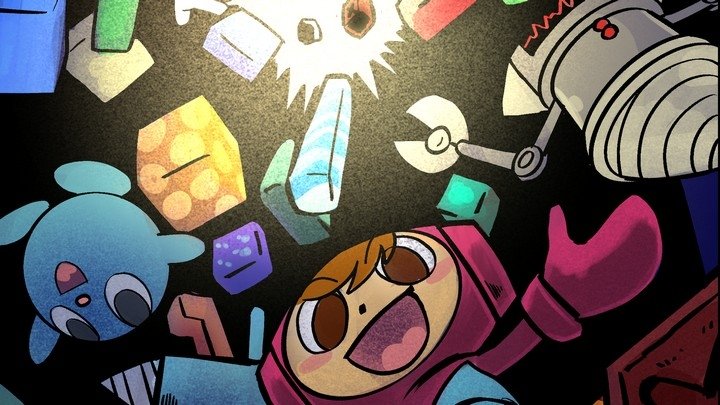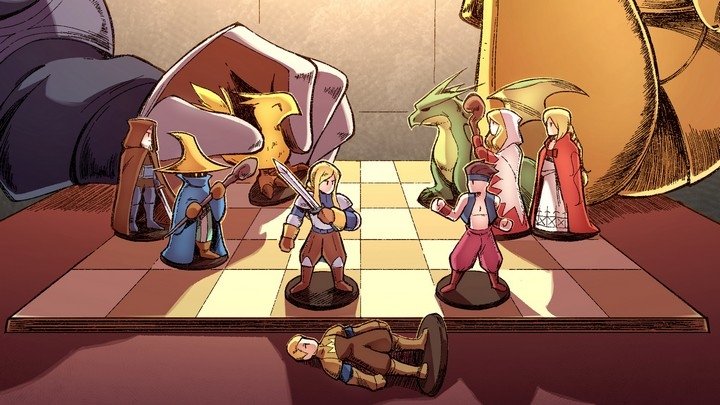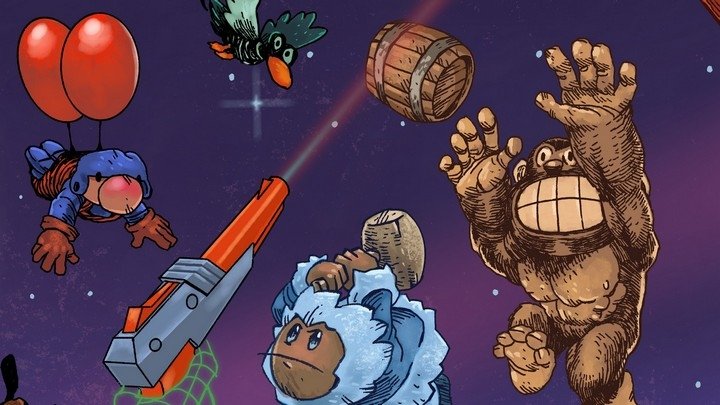Blade Strangers, a bizarre triumph of obscure classics
Welcome back to the stage of esoteric import gaming history.
I've been following Blade Strangers—a fighting game for Switch, Steam, and PlayStation 4 by Studio Saizensan and Nicalis — with absolute fascination for quite a while now. I've had something like a year since its announcements to mull it; I got to play it at this year's BitSummit; and I have a review copy of the game on-hand. And after all of that, I still don't know what to think.
Oh, as a fighting game, I think it's fine. I stopped being a reliable witness for the quality of fighters around the time they gave Chun-Li a legitimate fireball, so don't ask me if it's fighting game community-grade or anything. Blade Strangers uses a simplified input system with two standard attack buttons and two special modifier buttons, which isn't the worst idea ever. To a certain degree, the setup is simplified in name only; there's an awful lot of multi-button actions here that require timing that the Switch's default buttons in particular aren't really built for. But the idea is that once you learn all the different permutations of buttons, they work consistently across all characters; there's no need to come to terms with Ryu-style fireball motions for one fighter and Mortal Kombat-style sequential button presses for another.
Likewise, the visuals and music seem fine. The game uses what appear to 2D sprites (they suffer a bit of artifacting as they scale), but the source art appears to be an odd hybrid of hand-drawn illustrations and pre-rendered 3D animation models. Certain elements, like billowing cloth and Shovel Knight's armor, have a decidedly low-poly look to them that stands somewhat at odds with the more naturalistic appearance of the characters themselves. So, both mechanically and stylistically, it's a strange duck.

Which is perfectly fitting, as "odd duck" describes the entire game. It has the feel and look of a Japanese doujin fighting game — a semi-professionally developed project combining a random assortment of characters. Studio Saizensan isn't merely semi-pro, of course, having shipped several games that have seen U.S. releases... but they are decidedly small and indie, and Blade Strangers' lineup is nothing is not a random assortment of characters. In fact, that's entirely what makes the game so fascinating.
The only characters who have any business whatsoever being in a fighting game at all are the ones Saizensan brought over from its Guardian Heroes-derived brawler Code of Princess: Solange the warrior princess, Ali the thief, Master T the slab of burly muscle, and the decidedly Char Aznable-looking Liongate. Their source material involves brawling and slashing and fighting, so that makes sense. But the rest? They range from odd fits for a melee fighter (ranged attackers like IntiCreates' Gunvolt and Cave Story's Curly Brace and Quote) to just odd fits, period (see: Isaac, as in The Binding of Isaac). Since Studio Saizensan owns the rights to the Umihara Kawase series as well, Blade Strangers also crams in the entire cast of those games... despite their being almost entirely non-combat-focused exercises in physics and platforming.
Of course, to a large degree, the cast of any crossover fighter comes down to which characters are available to the developer and publisher, which explains why the cast here is so heavily focused on trying to create a sort of uniformity to the quirky catalogues of Saizensan and Nicalis. (Gunvolt and Shovel Knight appear, one assumes, courtesy an indie gaming espirit d'corps on behalf of IntiCreates and Yacht Club Games.) This is still less of a pile-up than the roster in PlayStation Fighting All-Stars, that's for sure. Still, it's undeniably a bit of a mess, especially once weirdos like Isaac and Emiko (who rides a giant cat into battle) enter the picture. But truth be told, I kind of love how nonsensical it all is.

More than that, though, Blade Strangers represents a small validation for a few corners of gaming that only a few years ago seemed doomed to obscurity. I remember being scolded by my section editor at 1UP.com for running a freelancer's freeware gaming column entry about Cave Story back when the game first launched (the complaint being that no one in their right minds would ever care about something so esoteric and foreign and it was a waste of our budget). Cave Story has, of course, gone on to become one of the canonical greats of indie gaming, a tiny passion project that helped give rise to a vital and inventive facet of the entire medium; our freelancer (the illustrious Scott Sharkey) saw the good in it, even if our editor didn't. Likewise, Umihara Kawase was for years one of those interest Super NES import titles that got away — a ridiculously challenging platformer starring a little girl with a highly elastic fishing pole that skipped international release for obvious reasons. But now that entire series has made its way into the U.S., and its main character is front-and-center here. Granted, Blade Strangers itself will probably end up being fairly obscure so far as these things go, but a decade ago the thought of these vintage import and indie properties not only surviving but expanding all these years later would have been unthinkable.
I'm not really sure who Blade Strangers is supposed to be for. I don't think it has the mechanical depth to be a top-tier FGC pick. I don't know if casual fighting fans would necessarily pick it out of a police lineup thanks to its heavy reliance on extremely niche properties. And while I'm a fan of just about all the games represented here, I'm pretty useless when it comes to fighters. I don't know if anyone in the world asked for this game to exist. But you know? After seeing Curly Brace improbably duke it out with Gunvolt, I'm glad it does.




